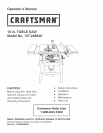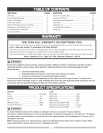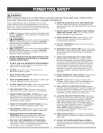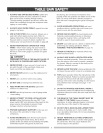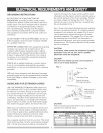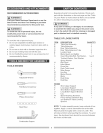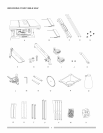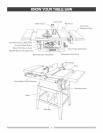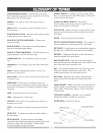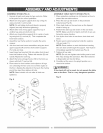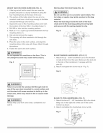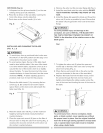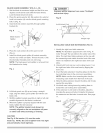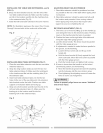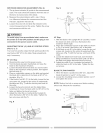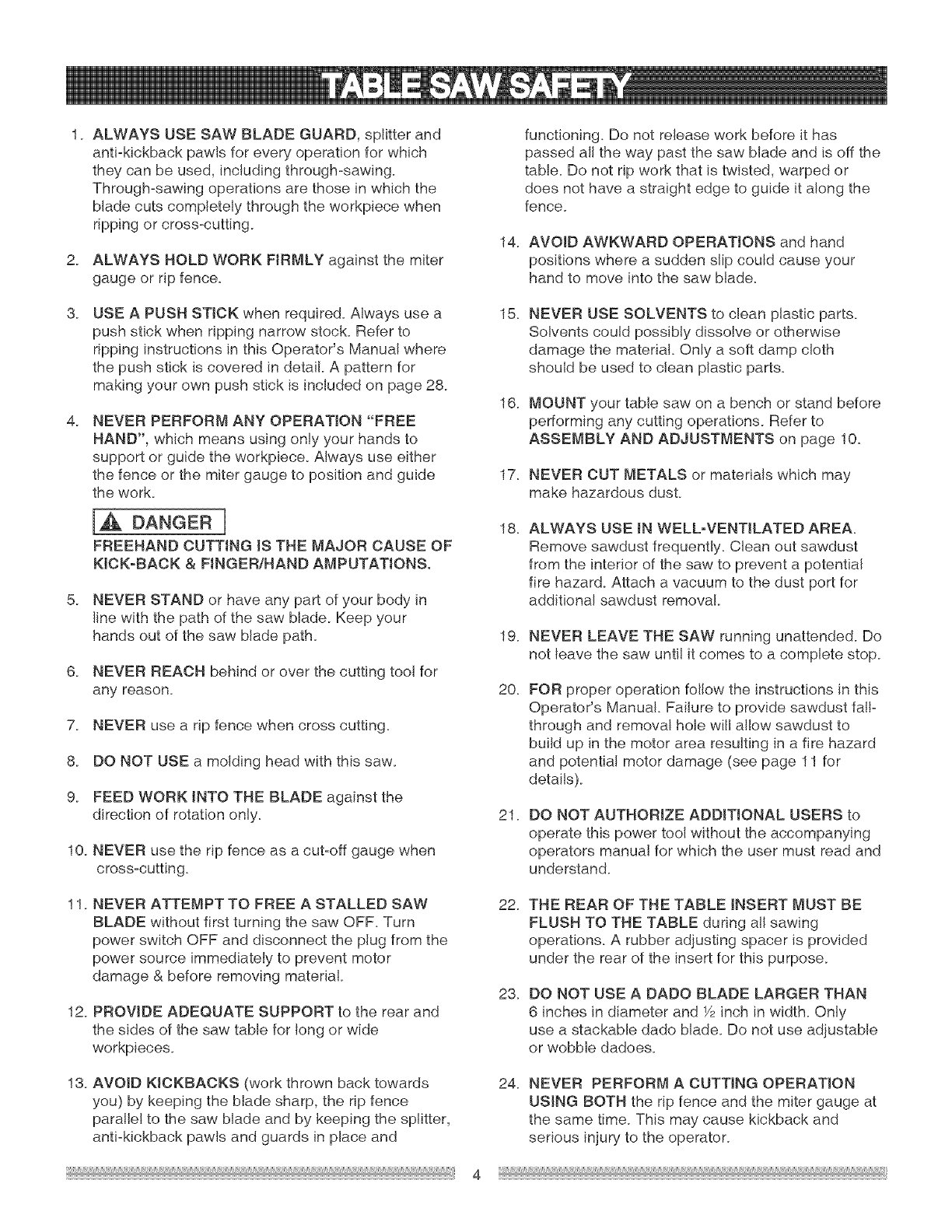
1. ALWAYSUSESAWBLADEGUARD,splitterand
anti-kickbackpawlsforeveryoperationforwhich
theycanbeused,includingthrough-sawing.
Through-sawingoperationsarethoseinwhichthe
bladecutscompletelythroughtheworkpiecewhen
rippingorcross-cutting.
2. ALWAYSHOLDWORKFIRMLYagainstthemiter
gaugeorripfence.
functioning.Donotreleaseworkbeforeithas
passeda!lthewaypastthesawbladeandisoffthe
table.Donotripworkthatistwisted,warpedor
doesnothaveastraightedgetoguideitalongthe
fence.
14.AVOIDAWKWARDOPERATIONSandhand
positionswhereasuddenslipcouldcauseyour
handto moveintothesawblade.
3.
USE A PUSH STICK when required. Always use a
push stick when ripping narrow stock. Refer to
ripping instructions in this Operator's Manual where
the push stick is covered in detail. A pattern for
making your own push stick is included on page 28.
4. NEVER PERFORM ANY OPERATION "FREE
HAND", which means using only your hands to
support or guide the workpiece. Always use either
the fence or the miter gauge to position and guide
the work.
[A DANGER]
FREEHAND CUTTING iS THE MAJOR CAUSE OF
KICK-BACK & FINGER/HAND AMPUTATIONS.
5. NEVER STAND or have any part of your body in
line with the path of the saw blade. Keep your
hands out of the saw blade path.
6. NEVER REACH behind or over the cutting tool for
any reason.
7. NEVER use a rip fence when cross cutting.
8. DO NOT USE a molding head with this saw.
9. FEED WORK iNTO THE BLADE against the
direction of rotation only.
10. NEVER use the rip fence as a cut-off gauge when
cross-cutting.
15.
NEVER USE SOLVENTS to clean plastic parts.
Solvents could possibly dissolve or otherwise
damage the material. Only a soft damp cloth
should be used to clean plastic parts.
16. MOUNT your table saw on a bench or stand before
performing any cutting operations. Refer to
ASSEMBLY AND ADJUSTMENTS on page 10.
17. NEVER CUT METALS or materials which may
make hazardous dust.
18. ALWAYS USE tN WELL-VENTILATED AREA.
Remove sawdust frequently. Clean out sawdust
from the interior of the saw to prevent a potential
fire hazard. Attach a vacuum to the dust port for
additiona! sawdust removal.
19. NEVER LEAVE THE SAW running unattended. Do
not leave the saw unti! it comes to a complete stop.
20.
FOR proper operation fotlow the instructions in this
Operator's Manual. Failure to provide sawdust fag
through and removal hole win allow sawdust to
build up in the motor area resulting in a fire hazard
and potentia! motor damage (see page 11 for
details).
21. DO NOT AUTHORIZE ADDITIONAL USERS to
operate this power tool without the accompanying
operators manual for which the user must read and
understand.
11. NEVER ATTEMPT TO FREE A STALLED SAW
BLADE without first turning the saw OFF. Turn
power switch OFF and disconnect the plug from the
power source immediately to prevent motor
damage & before removing material.
12. PROVIDE ADEQUATE SUPPORT to the rear and
the sides of the saw table for long or wide
workpieces.
22. THE REAR OF THE TABLE INSERT MUST BE
FLUSH TO THE TABLE during all sawing
operations. A rubber adjusting spacer is provided
under the rear of the insert for this purpose.
23. DO NOT USE A DADO BLADE LARGER THAN
6 inches in diameter and Y2inch in width. Only
use a stackable dado blade. Do not use adjustable
or wobble dadoes.
13. AVOID KICKBACKS (work thrown back towards
you) by keeping the blade sharp, the rip fence
parallel to the saw blade and by keeping the splitter,
anti-kickback pawls and guards in place and
24. NEVER PERFORM A CUTTING OPERATION
USING BOTH the rip fence and the miter gauge at
the same time. This may cause kickback and
serious injury to the operator.



